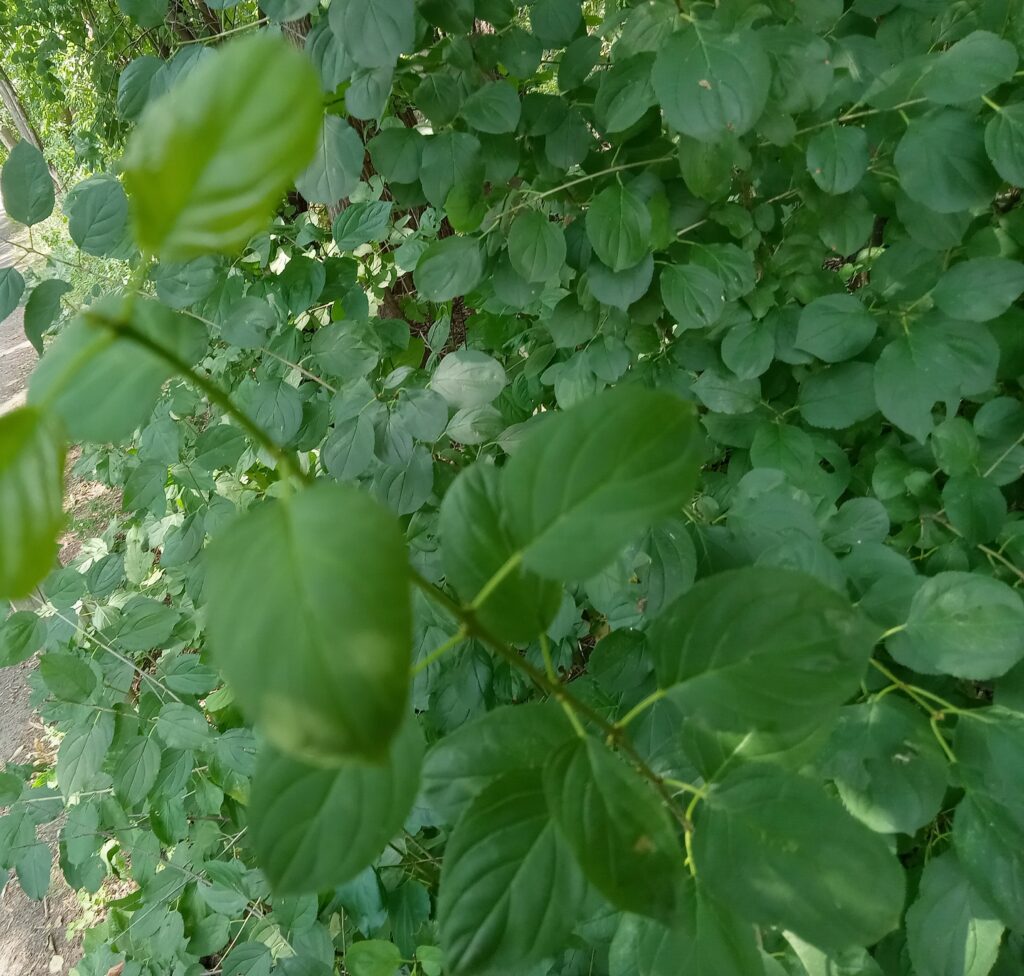Weeding to Fall

By Karolyn Preiss, Three Rivers 3 Field Crew Member / AmeriCorps Member

Fall is upon us. The sun is setting in the sky earlier, the days are getting shorter. A few scant leaves have been scittering, scattering across the ground, and they are soon to be joined by many, many more. There shall be hundreds of thousands of brightly colored leaves strewn about, forming a glorious tapestry of warm hues as the world makes ready for winter.
The Three Rivers Nursery Crew has been hard at work, clearing buckthorn and weeding seed beds.
The team has worked at clearing buckthorn at about three or four sites now, each with different nuances in the landscape. The most recent site had thickets of seedlings that needed to be cut with a brush saw, while other sites we’ve been to have required clippers, loppers, handsaws, and chainsaws. Small buckthorn can be and were also pulled by hand at this site (in moderation, with an eye to soil disturbance, essentially just to see its facility). One environment we worked at was a mature buckthorn forest, one had buckthorn patches bordered by prairie, one was a site where a forestry mower had gone through and cleanup work was needed around the other trees, and one was taken over by young buckthorn with large trees in alternative species spotting the landscape. We’ve used two chemicals on the buckthorn: Garlon and Vastlan, the primary difference being that Garlon is mixed with oil while Vastlan is mixed with water. We’ve also used multiple methods of application, including buckthorn blasters, paint brushes, and backpack sprayers. We’ve applied the chemical as a foliar spray–meaning that we sprayed the chemical onto the leaves/foliage–as well as dabbed it on cut stumps and in cuts utilized for girdling during our days of hack and treat. We shall see what the next two and a half months have in store for us. The buckthorn is still plentiful as the year slowly (and quickly simultaneously) comes to a close!

I remember some of my first Conservation Corps articles about buckthorn. I was flabbergasted by how difficult it was going to be to treat. I was surprised when I saw it in other parks and parking lots. It was a phenomenon. I waxed and waned poetically about it, about the change that manifests in the landscape in our efforts to manage it and our efforts to promote sustainability. I taught kids to boo at it in passing so they, too, know that it is an invasive, unstoppable force. Even last month I was mooning over our first days in the Corps, and writing terrible country music about our time managing the invasive. But, I think the past few weeks have officially inured me to the horror and/or the wonder of buckthorn management for the time being. It will be cool to see the changes happen longitudinally as the parks shift and grow with the natural resource management strategies currently in place, but if I never see buckthorn again–or at least until next spring–that would also be great. It’s been just as fun learning about other invasives, gridding to find the varying species across myriad landscapes, and using chem or pulling/plucking to eradicate our troublemakers. I likened the experience to ‘weeding the forest’ or ‘weeding the prairie.’ A Natural Resource Worker’s job is never done.
Weeding hasn’t just been allocated to the forest or prairie though. Being based out of a nursery means that the Conservation Corps Crew takes their turn in weeding the seed beds on the homefront. The Crow-Hassan Nursery grows tens of thousands of trees every year, each one being planted in a seed bed versus a pot in order to prevent the roots from circling and becoming bound longterm which can lead to self-girdling. That makes for a lot of trees that need to be weeded multiple times throughout the year. Since this can be fairly redundant physical exertion, one finds oneself playing a little bit to keep a positive attitude.

Now, for instance, I’ve got weeding preferences. I did not know much of anything about weeding coming into the Corps, but now I’ve got favored weeds–the easy ones or the big ones–a type of sedum and lamb’s quarters. I’ve got the ones that are mystifying in their root systems and ability to spread–red and white clovers as well as bindweed. I know that grass is not a favorite though it does come out of the earth in giant clumps and can also be easy to trim so that it doesn’t dwarf the surrounding plants. I’ve got the ones that are prickly–thistle–and the ones that ought to be pulled from the bottom which, of course, creates a category of ones that can be pulled from the middle or top. I like being able to stand for as long as possible while I weed so that I feel and keep momentum, a stance much easier to sustain with bigger weeds. I don’t care for needing to carry tools, either, being a bit of a hippy, but a soil knife works exceptionally well with grass and cutting through root systems. Loppers suit for cutting larger weeds that have extensive, spreading root-systems below ground. Otherwise, one can also use hoes, clippers, etc.
There are all sorts of weeding nuances. And, if/when you feel as though you have absorbed enough of said nuances, you can play verbal games with fellow weeders, listen to music or catch up on a podcast or audiobook, converse with the folks nearby, take some personal time to reflect on private matters, etc. It takes discipline and drive to keep going in those rows of 100+ trees.
Soon enough though, all of the trees will be taken from their beds and tucked away for winter storage and the weeding will be no more.
We shall see once the leaves meet the leaves.
It’s been a wild journey so far. Just three months left!
